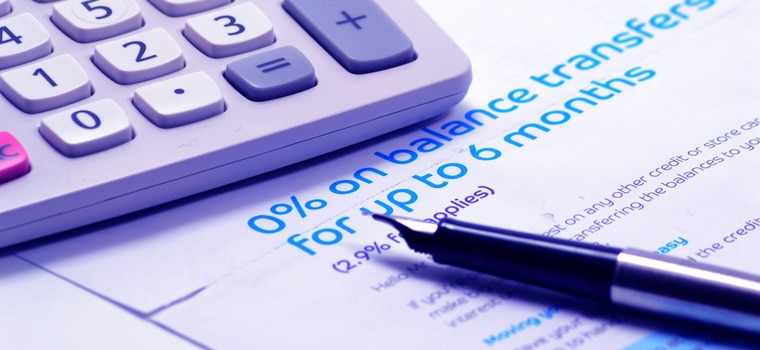A balance transfer usually takes about five to seven business days to complete. Some credit card issuers take longer than others, however, and for them the process could take as long as six weeks.
It’s a good idea to make at least the minimum payment on time for any card account you are transferring a balance from to avoid getting hit with a late fee.
We’ve put together a list of the timeframes for the major card issuers to help you understand how long the process might take. We’ll cover how to track your balance transfer and what to do if your transfer is delayed.
How Do Balance Transfers Work?
Just as it sounds, a balance transfer is an act of moving a balance from one credit card to another. Balance transfers are a popular debt consolidation strategy because you can transfer high-interest credit card debt to another card with lower interest rates.
Lower interest rates mean more of your payment goes to paying down the principal balance, which is a smart way to pay down old debt and save money. In fact, you could even pay no interest if you transfer your card to a credit card offering 0% interest for an introductory APR period. Paying less in interest, or no interest at all, gives you the opportunity to pay down your balance faster without paying a cent to interest if you can pay the balance during the introductory period.
Note that the various credit card companies handle balance transfers differently. For example, one creditor may perform the balance transfer electronically. Others may give you the balance transfer checks directly, leaving you to pay off the cards you are transferring
Many card issuers allow you to transfer balances from more than just credit cards. For example, you may be able to transfer debt from student loans, personal loans, auto loans and the like.
Typically, you’ll need to pay a balance transfer fee which varies for each credit card company. Usually, the fee falls between 3% and 5% of the amount being transferred.
Of course, all card issuers don’t operate on the same timetable. The time window for completing a balance transfer depends on the card issuer you are using, as we’re about to see.
How Long Does a Balance Transfer Usually Take?
You can usually find out how long a balance transfer takes by visiting the website of the credit card company receiving the debt transfer.
Here is are the timeframes for 10 major credit card issuers:
- American Express: Usually complete in five to seven days but can take up to 6 weeks.
- Bank of America: 5 to 21 days.
- Barclays: Up to 10 days.
- Capital One: 3 to 14 days.
- Chase: Up to 21 days.
- Citi: 2 to 21 days.
- CreditOne: Up to 7 days.
- Discover: 7 to 14 days.
- HSBC: 7 to 10 days.
- Wells Fargo: Up to 10 days.
If you’re using a different credit card company to complete your balance transfer, contact them directly to find out how long their process takes.
How to Track Your Balance Transfer
Perhaps the easiest way to check if your balance transfer is complete is to check your credit card account online to see the progress. Once the credit card company authorizes and processes the transfer, it will show debt on the new card.
As an example, let’s say you transfer a $2,000 balance from your CreditOne card to a Chase Slate® balance transfer card. When you see the $2,000 debt on your Chase Slate® account balance, your transfer is complete. Note that a balance transfer fee will be added to your balance.
If your account shows a status of “pending,” that means the transfer is in progress but not yet finalized.
Don’t forget to check the balance on your original credit card after the balance transfer is complete to ensure your remaining balance is zero. It’s possible that recent purchases have not yet been posted to your account. You may consider calling the credit card account and asking for a payoff balance.
What To Do If Your Balance Transfer Is Delayed
Remember that some credit issuers can take several weeks to complete a transfer and you may have to practice patience. If you think it’s taking too long, call the credit card company handling your transfer and ask for a status update.
It’s a good idea to make an additional call to the original card company and ask them when they will apply the funds to your account. Keep making your card payments until the balance transfer is complete to avoid late fees and to protect your credit.
Can I Make the Balance Transfer Process Complete Faster?
The short answer is no. These companies have their own processes and timelines you must live with. However, here are some tips to help you ensure the process goes smoothly and without delays:
- Apply Online. You’ll save a few days or more of wait time by submitting your balance transfer application online rather than sending it through the mail.
Also, your issuer may offer the ability to track the status of your balance transfer online.
Get a New Card and a Balance Transfer at the Same Time. Depending on the lender, you may be able to apply for a balance transfer when you are applying for a new credit card.
Just make sure the amount of credit you are offered is sufficient to cover your balance transfer amount.
- Transferring Debt to An Existing Card is Faster. When you transfer a balance to a new credit card, the process usually takes longer than it would to transfer the amount to an existing card. Bank of America, for instance, says they process balance transfers to existing accounts within five days but it can take 21 days or more to transfer a balance to an existing card account.
Should I Get a Balance Transfer Credit Card?
If you can get a balance transfer account with a lower interest rate, it may be worthwhile to pursue. It could be especially beneficial if you can transfer your debt to a card with 0% interest for an introductory period as long you are able to pay off the balance within that introductory time frame.
If your credit score is currently higher than when you opened your last card, you may qualify for a lower interest rate on a new balance transfer account.
By contrast, it’s not always a good idea to sign up for a balance transfer card. Such is the case when you’re close to paying off your entire balance. When you consider the 3% to 5% balance transfer fee, it may cost you more to transfer your balance for such a short period of time, even if the interest rate is lower.
Before you attempt a balance transfer, you might consider saving time and money by simply requesting a lower interest rate from your credit card company.
The Bottom Line
If you’re transferring your debt with a balance transfer credit card, make sure you stay on top of the process and continue to make at least the minimum payments until the process is complete. That way you can steer clear of other issues, such as late fees and late marks on your credit report.





